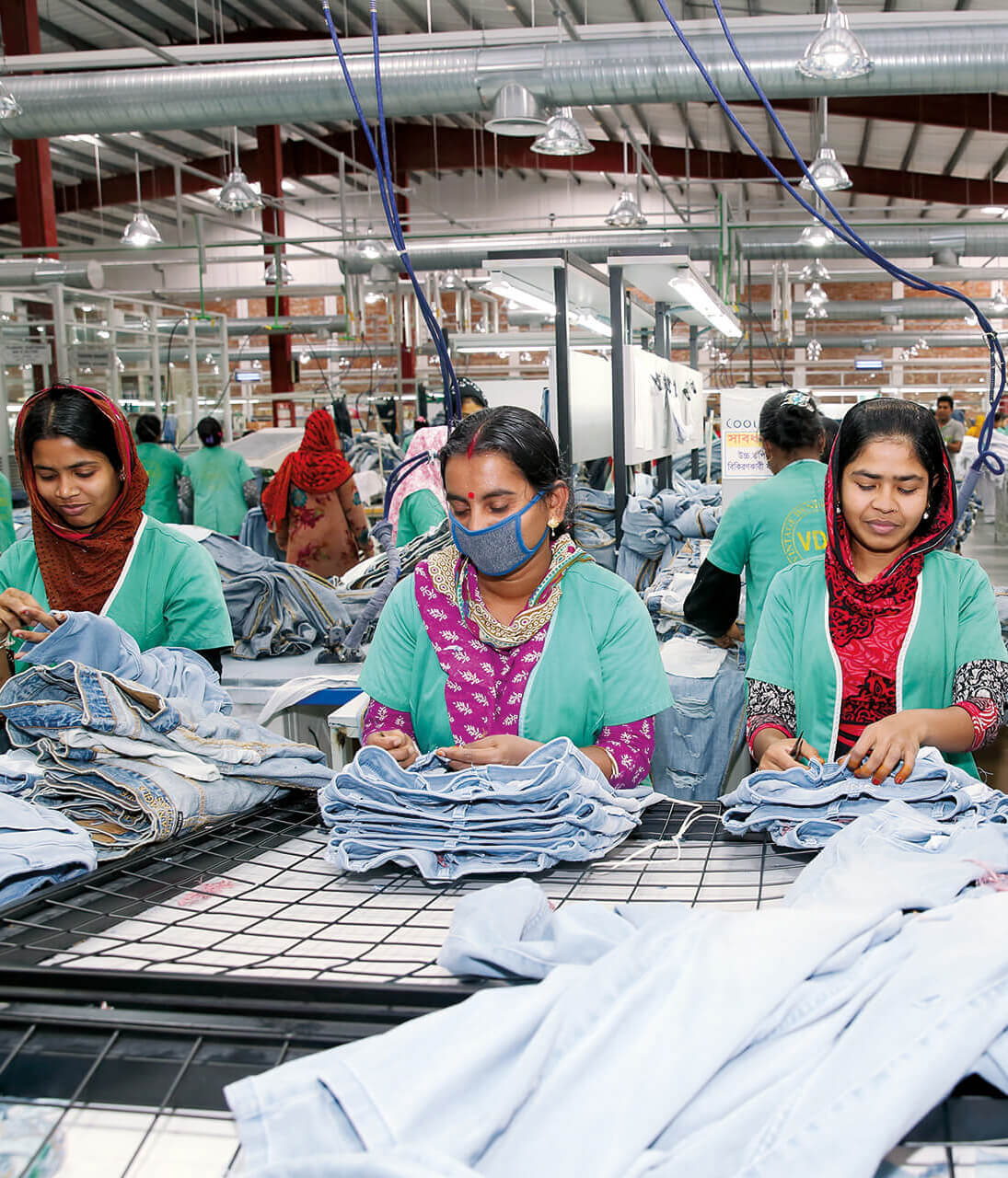Because climate-friendly investing is at the core of sustainable development
0˚
In order to limit global warming to 1.5 degrees, we need to halve emissions by 2030, and be net zero by 2050.
0 bn
is the foreseen increase in global population between 2013-2030, 97% of which will be in developing countries.
0%
of the increase in electricity generation in 2017 came from developing countries.
The developing world is the key battleground
Investing in our future used to mean our financial future. Now, it means the future of our planet and the future of our species. Without radical change, the world in 2050 will be disastrously different from today. A colossal, catastrophic crisis from climate change is imminent, with the threat beyond the scope and scale of anything seen since the height of the Cold War. The difference is that then inaction saved us – now inaction could very well doom us. This year we have, therefore, decided to focus on how all our investments are part of the fight against the impending climate crisis.
The climate emergency is real
- Emissions need to be halved by 2030, and we need to be net zero emissions by 2050, in order to limit global warming to 1.5 degrees Celsius.
- 1.7 bn more people will be exposed to regular, extreme heatwaves under 2 degrees Celsius, compared to 1.5.
At the same time, the world urgently needs to address the need for development. As it stands, hundreds of millions of people do not have access to healthcare, energy, nutrition, finance, education and a host of other areas essential to quality of life. We must resolve both problems – at the same time.
Need for development is real
- 730 m people live in extreme poverty.
- 840 m people do not have access to electricity.
- 1.7 bn adults do not have access to finance.
However, while some paths to development are climate neutral (or even climate positive), some could lead to a major increase in emissions. For example, in 2017, 94% of the increase in electricity generation came from the developing world. Meeting that demand with fossil fuels will hurt all of us. As unfair as it sounds, the developing world needs to do what the developed world did not – develop sustainably. At the same time, while the consequences will be felt by all of us, those most vulnerable to the effects of climate change will be low-income households in the developing world.
We must, therefore, bridge the investment gap in the developing world. Part of the challenge of investing in these regions is the different context, in terms of regulation and infrastructure. Although there are investment solutions that address this, a key difference is the amount of investment available. In general, investment flows to the developing world are a tiny part of the total. If we are to prevent a global climate crisis, we need creative investment solutions that will catalyse private investment and address the funding gap for sustainable solutions in the developing world.
Climate change targets have been set for 2030 and 2050 for a reason – our environment is changing rapidly and, without immediate action, irrevocably. Unless we respond now, this is a crisis that most of us will live to see unfold, and where our children – not our grandchildren or great-grandchildren – will have to face the consequences.
Paul Hailey, Head of Impact at responsAbility Investments AG
0 m tonnes
In order to limit global warming to 1.5 degrees, we need to halve emissions by 2030, and be net zero by 2050.
0 GWh
Projects developed by responsAbility generated 12,000 MWh of clean energy.
OUR IMPACT
Technical Assistance – the Swiss Army Knife of green investing
Reducing emissions is all about change – from switching to energy efficient buildings and cars, to transitioning to solar power or upgrading to energy-efficient supply chain equipment.
Our climate fund is dedicated to reducing emissions via blended finance* and lends directly to renewable energy projects or financial institutions for green lending to SMEs. But as these changes can be a challenge, we have a dedicated Technical Assistance (TA) team to play an integral part in launching financing for energy efficiency or renewable energy projects, and essentially, making investment in these projects possible in the first place. For such projects, the biggest hurdle to change is often the lack of experience in identifying and evaluating the risk and return of energy efficiency and renewable energy investment opportunities at the outset. Therefore, our TA experts offer support on all of the following topics to make green lending accessible to anyone:
Best practice advice and exchange / individual energy assessments / tailored system selection / alternative fuel options / building insulation standards / domestic policy trends / expert market assessments / vendor finance schemes / international E&S best practice / project risk consultancy / green building standards / identification of qualified suppliers...
CO2rA – a carbon assessment and monitoring tool like no other
Managing a blended finance renewable energy fund means complying with a high standard of reporting requirements. So the engineers on our investment team developed a tool to make green lending possible at scale.
This web-based tool, called CO2rA, offers clients simplified reporting and feedback on project eligibility, tracks on-lending targets, gives clients an overview of their portfolio and visualizes CO2 emissions and energy saved.
CO2rA’s approach to CO2 saving calculations are in line with global reporting standards, and as an in-house tool, it is continuously developed and improved to suit the needs of investors and the investment team.
Since 2015, CO2rA has recorded savings of more than 13 m tonnes of CO2 emissions over the project’s lifetime. The introduction of this tool has helped to attract private investors, underlining the catalysing potential of a rigorous monitoring framework. Since 2015, the share of private investors increased to over 30% and assets under management for the fund have more than doubled.
*Blended finance is the use of catalytic capital from public or philanthropic sources to increase private sector investment in developing countries and sustainable development (Convergence).
We invest in three key areas of greenenergy, reducing emissions and providing access to cleaner, cheaper power.
In doing so, our portfolio companies catalyse sustainable development and directly contribute to the Sustainable Development Goals.
THE CHALLENGE
Ensure universal access to affordable, reliable and modern energy services
Nearly 1 billion
people do not have access to electricity
USD 2.5 billion
financing gap for off-grid energy between 2018-22
Increase substantially the share of renewable energy in the global energy mix
52-67%
of global energy generation in renewable energy to limit global warming to 1.5°C.
USD 700 billion
financing gap for renewable generation per year
Double the global rate of improvement in energy efficiency
15%
Amount of energy saved by 2040 if all potential energy efficiency projects are completed.
USD 584 billion
Total global annual investment needed to achieve the required energy savings
A visit to a battleground of conflicting interests – and the key to a peaceful solution
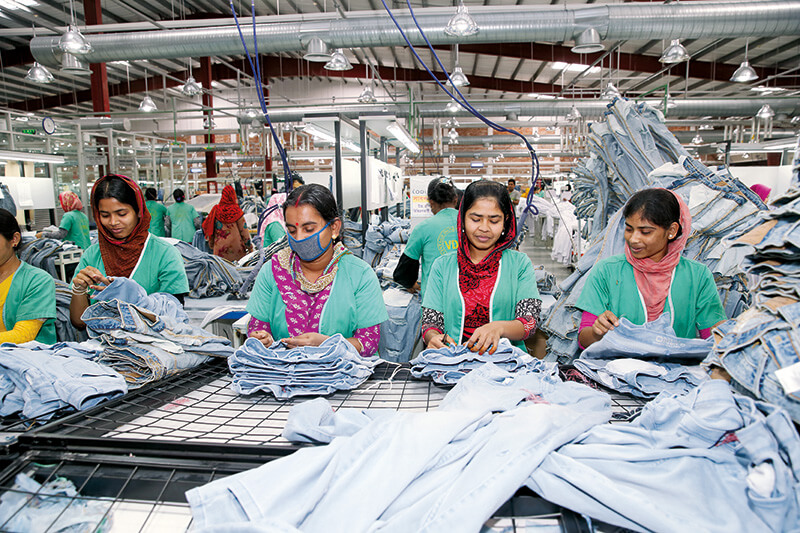
Bigger. Faster. poorer.
Welcome to Bangladesh, a country of superlatives: It is one of the world’s most densely populated countries blessed with one of the fastest growing economies. It is also one of the world’s poorest and among the countries most vulnerable to climate change. As a Least Developed Country (LDC), Bangladesh is exempt from any responsibility to reduce greenhouse gas emissions. For a long time, this was the rallying factor for policy makers to give off higher amounts of emissions in nearly all sectors with little regard for the environment. But times are changing – and in a variety of ways.
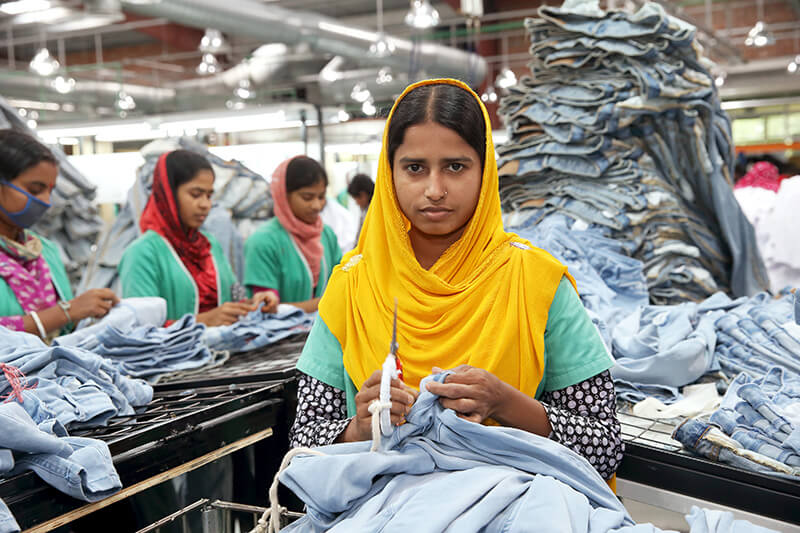
Responding to market demand
Take the booming textile and ready-made garment sector which accounted for more than 80% of total exports in 2016-17 and today ranks 2nd in the world for textile exports to Europe and the US. Increased consumer pressure in these markets has led fashion brands to offer premiums for environmentally friendly production – a compelling business proposition for manufacturers who are beginning to see energy efficiency investments in a completely different light. This, in turn, is creating a new business opportunity for local banks.
The City Bank Limited was one of the country’s first to systematically roll out a green lending product, working in close cooperation with responsAbility’s climate finance team and approaching business clients like sweater manufacturer Pioneer Knitwears: In 2017, the company replaced its existing machinery with 2,000 energy-efficient knitting machines. The USD 16 m investment financed through one of the bank’s green loans prevented a total of 7,778 tonnes of CO2 emissions. At the same time, it resulted in 47% savings in energy consumption.
The recipe: Make businesses want to go energy efficient by presenting a compelling business case
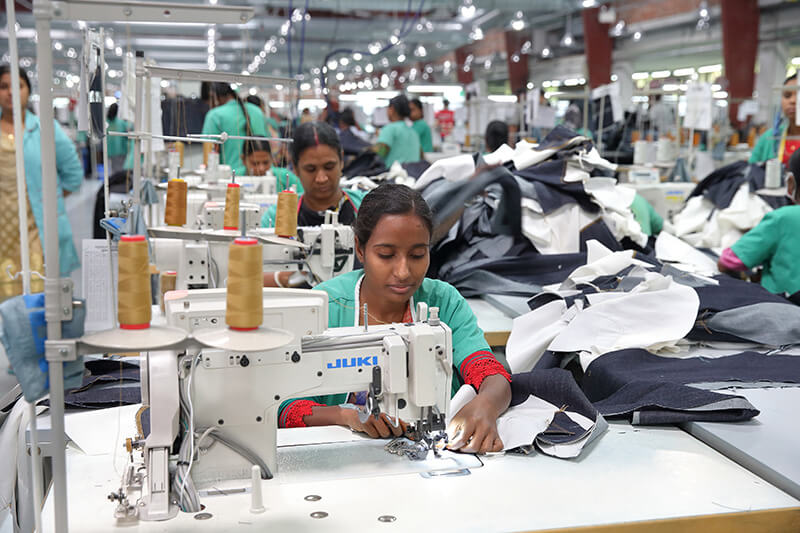
It is this solid monetary effect of energy efficiency investments that the bank is striving to highlight. “While awareness for the need to mitigate climate change is increasing, investment decisions are taken based on financial considerations,” explains The City Bank’s Mohammad Jahangir Alam, who has been instrumental in driving the bank’s green loan business.
Altering perceptions
Cases like Pioneer Knitwears may prove that there is not a conflict of interest between financial and environmental consideration. However, changing prevailing perceptions remains tough. “The City Bank has invested a lot of resources in raising awareness for the green business opportunity among their clients,” says responsAbility energy specialist Sathish Dhanapal, who works with financial institutions across Asia to maximise their green lending efforts. Showcase examples help to attract further business.”
Meanwhile, things are also changing from a policy perspective. Bangladesh has prepared an Implementation Roadmap for the Nationally Determined Contribution to manage growing emissions without compromising development. The central bank has responded by incentivizing green lending, converting this battleground of conflicting interests into a powerhouse for sustainable development.
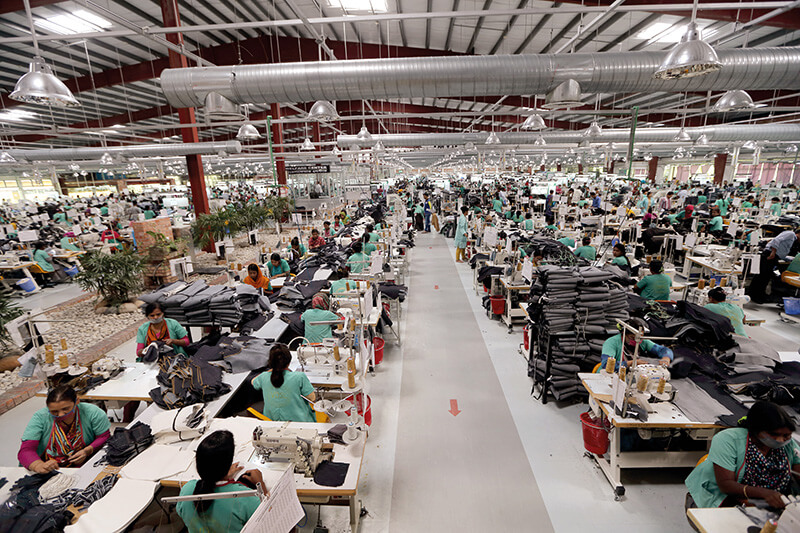
0%
Fight climate change
25% of freshwater reserves are consumed and 8% of global GHG emissions are produced for food that will never be eaten.
0%
Fight poverty
Reducing post-harvest losses could increase smallholder farmers’ income by up to 15%.
1 bn people
Fight malnutrition
Reducing food loss by half would yield enough food to feed 1 bn people according to the Rockefeller Foundation.
OUR IMPACT
Fighting climate change requires a profound transformation of agricultural systems that today waste too many resources. Private investments need to address the three gaps that must be closed for a sustainable future:
The Production Gap
With a significantly growing population reaching 10 bn people by 2050, current agricultural output would need to increase by 70% and would require USD 83 bn investment each year to meet new demand. Reducing food losses by half would already yield enough food to feed 1 bn (half of the additional mouths).In developing countries, the major issue regarding food loss happens post-harvest due to poor harvesting techniques and equipment, lack of local storage and processing infrastructure, and lack of access to markets.responsAbility addresses those problems by providing working-capital finance, asset financing and technical assistance, all of which are key in alleviating these constraints for smallholder farmers (see infographic).
The land gap
The world will also need more than 593 m hectares (twice the area of India) dedicated to agriculture and up to 3 bn hectares if no yield increase is realized. Our portfolio companies seek to increase yields by addressing the knowledge, equipment and infrastructure gaps that prevent smallholders from reaching their maximum production capacity. Another challenge is the climate-induced degradation of land that smallholders rely on. Some of our portfolio companies are finding innovative ways to prepare and help smallholders adapt, such as implementing efficient water technology, introducing resilient crops, or teaching agroforestry.
The emission gap
Emissions from agriculture need to be reduced by 11 Gt CO2 /year (more than the annual emissions of China). Two significant sources of emissions in agriculture are transportation and fertilizer use.
We invest in companies that are certified organic or have other environmental certifications in order to reduce fertilizer use as well as to promote organic and more efficient nitrogen fertilizers.
Promoting local processing also helps limit wasteful transportation. For example, this means commodities such as cashews produced in Africa don’t travel to the other side of the planet to be processed in Vietnam before travelling again to Europe and the US where they will be consumed.
Technical Assistance and an efficient value chain are key to waste reduction.
Responsible production means investing in innovation and providing Technical Assistance to ensure challenges can be overcome.
Challenges in
developing countries
6% of food lost
is a result of poor post-harvesting equipment and techniques that reflect both financial and knowledge constraints.
Processing
7% of food lost
is a result of poor storage, transport and processing facilities that reflect both financial and infrastructure constraints.
Markets
3% of food lost or wasted
is because of poor access to markets or is wasted by retailers.
responsAbility’s
strategies
355,012 smallholders trained
by portfolio companies to improve post-harvesting techniques.
Processing
86 processing facilities built
by portfolio companies who also built local infrastructure, e.g. roads, thereby improving access to markets.
Markets
57% of portfolio companies are present on multiple parts of the value chain
reducing the time needed to reach the final customer.
responsAbility’s
contribution
USD 373,000 disbursed in Technical Assistance
by responsAbility.
Processing
USD 46 m lent for long-term projects
such as local processing plants or warehouses.
Markets
USD 84 m worth of commodities pre-financed
through contracts already providing a buyer, thus reducing time to reach the customer.
NUTS ABOUT ZERO WASTE
In a world where millions starve, waste just isn’t an option – especially when processing luxury super foods

Nature does not foresee waste
The natural systems on earth are full of cycles: Think of plants living from the nutrients in the soil, and then fertilizing the soil once they decay. Unfortunately, this balancing principle has not been maintained among humans and society’s product pathways. Take the absurdity of a world where 1/3 of all food produced is either lost or wasted while, at the same time, increasing numbers of people are undernourished. And on the other hand, close to 2 bn adults are overweight from over-consumption, given the mind-boggling abundance of food for this privileged minority of the world’s population. So we are left with damaged health of the undernourished, and damaged health from the overconsumers, meaning a healthy diet is more and more ciritical from every angle.

Meet the queen of the nuts
This diet increasingly involves superfoods sourced from all corners of the earth, such as the macadamia. Consumption of this ‘queen of the nuts’ is supposed to help with weight loss and fight against diabetes. Australian by origin, macadamias today are grown worldwide where climates allow. This is time-consuming work: Nuts are harvested by hand and collected from the ground over a period of 3-6 months. While Kenya is the world’s third biggest producer, the luxury kernels rarely make it to local tables given their forbidding price. But their high market value, stabilized by increasing worldwide demand, make them a welcome cash crop for farmers.

For the business to be sustainable, we needto expand our product range to use all parts of the nuts.
Given the limited supply in raw nuts – in 2018 alone, the Kenyan harvest was down 20% following prolonged dry seasons – processors like Paem Nuts are more exposed to market swings. “For the business to be sustainable, waste isn’t an option,” explains owner and CEO Pally Muchiri, who set up the company in 2012 and has since expanded it into the top 10 of Kenya’s macadamia producers.

Creating maximum value and minimum waste
While premium kernels are Paem’s pride and primary product, the company has made it its business to get maximum value out of the harvest. “We use discarded shells to fuel our production lines and we sell broken kernels to confectionery manufacturers at a lower price,” Pally Muchiri explains. “With our latest expansion project we are now focusing on kernels that don’t meet our quality specifications.”
In Pally’s native Embu province, a hotspot for Kenya’s macadamia production, Paem is currently building a new processing plant to extract macadamia oil from discarded kernels. “Global demand for this product is on the rise, both for cosmetics and food, and the project will allow Paem to increase its revenues,” explains Estelle Schuppert, a Nairobi-based investment analyst for responsAbility. “At the same time – and this is what I love about the project – it will allow Paem to get maximum mileage out of a raw product painstakingly cultivated on African soil for the consumption of those who live in abundance, affording it the respect it deserves.”
0 m
clients covered by micro-insurance products from our portfolio companies.
0 m
customers in rural areas were served by our portfolio companies.
0 bn
USD in remittances were received through our portfolio companies.
OUR IMPACT
Microfinance can play a key role in building resilience against climate change
By 2030, 100 m people will be pushed into extreme poverty by climate change. Climate change will affect the world through multiple paths. Heatwaves, droughts, flooding and storms will be more frequent and more severe. This will lead to lower crop yields, less biodiversity and less habitable land. The human cost will be greater levels of starvation, poverty and migration. While we will all feel the effects of this, the impact will be most felt by low-income populations in developing countries. 58% of deaths from natural disasters occur in the 30 most fragile states. Under a +2°C warming scenario, by 2050, 600 m of the world’s poorest people will be exposed to serious water stress. The need to build resilience among the world’s most vulnerable is urgent, with microfinance a key tool for doing so.
Lack of resources means that the world’s poor are less able to invest in preventing and mitigating against natural disasters and other macro events. When shocks do occur – flooding, crop failure, a spike in conflict – low-income households often lose their main source of income. They are then faced with hard choices: sell an income-productive asset or be unable to pay for basic needs such as food, electricity or education.
Microfinance institutions can protect low-income households against lost income through micro-insurance and remittance products, as well as providing a cushion against emergencies via micro-credits and micro-savings. On a very basic level, the effects of natural disasters are mitigated by the mere ability to put savings in an account instead of keeping it at home, or in illiquid, perishable assets like livestock. Such products have been shown to significantly reduce the odds of households being pushed into poverty. In addition, access to finance can allow households to diversify revenue streams or invest in assets that provide better resistance to shocks e.g. homes with better standards of construction.
“Better financial inclusion increases resilience and reduces the impacts of disasters on well-being.”

LIMITING DAMAGE
When disaster cannot be avoided it pays to be prepared. How to get equipped to deal with the aftermath.

Nothing to lose
Sometimes, there are images you don’t forget. Images such as the ones that hit the global news in late 2018: a river of migrants from Central America, roughly 7,000 people, many of them families with small children. They were making their way north to risk a crossing at the US border, up to 4,000 kilometers on foot, and to seek a better life, far away from the violence and lack of opportunities in their home countries.
But there isn’t, of course, one single reason for this mass exodus. Honduras, where the caravan originated, is one of the poorest countries in Latin America and has endemic problems with gang violence, drug wars and corruption. The per capita income is one of the lowest in the region, and remittances from relatives who have made it to the US represent about a fifth of GDP.

Catering to those who have not
With 40% of the country’s population depending on agriculture as a livelihood, the negative impact of climate change doesn’t help. Honduras is part of the Central American Dry Corridor, which stretches from Southern Mexico down to Panama and suffers from severe inclement weather due to El Niño. Weather extremes such as droughts and floods have more than doubled since the early 1990s, taking away the livelihoods of smallholder farmers who are dependent on rainfed agriculture. Population growth and limited job prospects outside of agriculture continue to drive emigration.
Those who stay are often hard pressed to find a way to earn their living. “In rural areas, many of our clients seek to diversify their income base by, say, running a convenience store or keeping livestock besides their main farming activity
– anything that will supplement their income and allow them to better withstand shocks such as continued droughts,” explains Walter Rolando Chávez Funes, Head of Finance and Treasury at Banco Popular.

Financial institutions are instrumental in that they help people to create a livelihood – and to stay.
With 60,000 borrowers and 56,000 depositors, the bank is the country’s largest microfinance institution and, as such, targets the nearly 65% of the population who live in poverty – a large portion of them outside the country’s major cities. At this point, the bank is hard at work to further increase its exposure to rural clients, providing access to credit, savings, insurance and remittances, all of which are designed to help people to build resilience and escape poverty.
“Only 39% of adults in rural Honduras have access to a bank account – there is a huge opportunity there”, Walter Chávez explains. “We invest a lot in financial education and encourage clients to make provisions and diversify.”

Building livelihoods
César Carcelén, investment officer with responsAbility, has worked with Banco Popular for several years. “Microfinance, simply put, is a method of getting loans to poor people who have no credit history, no collateral, no income, and often no education,” he explains. “By providing this sort of service, financial institutions like Banco Popular are instrumental in helping people to create a livelihood and more: a reason and a means to stay.”
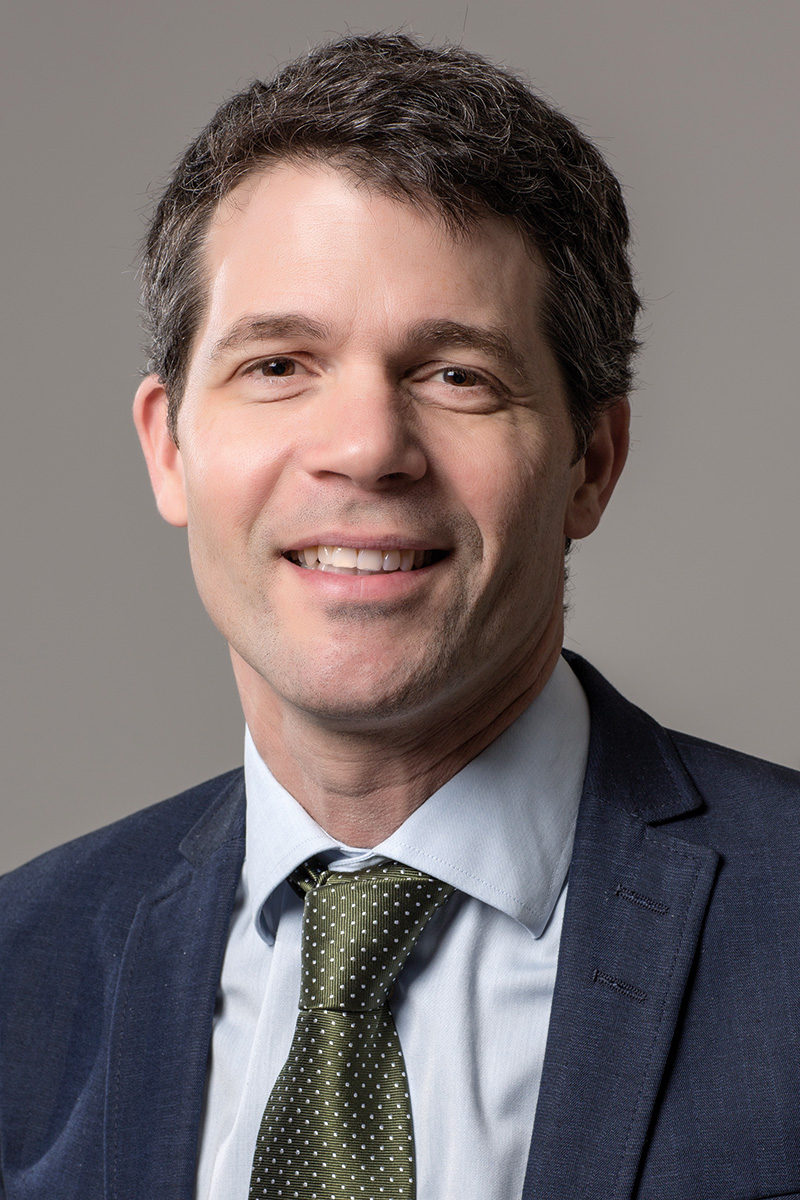
Eric Usher, head of the UN Environment Programme Finance Initiative, UNEP FI.
A MAJOR SHIFT IN MINDSET
If sustainable finance is to benefit the climate and the SDGs, it needs to actively identify positive impact. A conversation with the UNEP Finance Initiative’s Head, Eric Usher
In September 2019, your organization launched the Principles for Responsible Banking. Why is this important?
With the UN 2030 agenda, the Sustainable Development Goals and the Paris Climate Agreement, there was an upsurge of activity that brought the banks forward to draft the Principles for Responsible Banking in order to align the banking sector with these goals. They also enable banks to embed sustainability across the business and to identify where they have potential to make the most impactful contribution, while positioning the bank to leverage new business opportunities with the emergence of the sustainable development economy.
What is new about this approach?
The need is to look forward, to not only stay away from bad deals that create a negative environmental impact, but to also make the role of the financial sector to finance positive impact.
To do that, we need new capacities in the organizations to identify what is impact, what is compliant with these environmental goals, and how do you drill down to specific transactions that generate a certain type of impact.
What are the challenges arising from the need to report on impact?
One is the ability to identify that impact is not straightforward. In the investment industry, the normal thing is, people love to have lists, what’s good and what’s bad, and essentially you can then tick boxes. I would say even for climate action or climate mitigation, it can kind of work. But as you start to go into the SDGs, what you need, rather than the processes to tick boxes, is a team, and capacity, and tools to be able to analyze and identify what is an impactful transaction. And the capacity to be able to recognize it when you see it, actually.
How do you bring these investments to scale?
It seems like almost everybody has been
trying something. Issuing green bonds. Investing in renewables. Everybody is doing something. A lot of great somethings. The reality is: That’s not enough. So how do we shift from doing something to doing everything? If you issue green bonds, that’s great. But now the question is, what do you do with the rest of your bond portfolio? What are your plans to green it? I mean, you have a renewables team that does renewables investments – that’s great. But then you still have a very large power sector team who does a lot of core. So how do you actually broad-base this? Of course, the big players, they all have something they need to work on in their portfolios. The question is: Are they working on it, or are they ignoring these big issues?
What is the role of a specialized impact asset manager like responsAbility?
One role is as a provider of capital for projects and businesses that otherwise won’t have access. But I think the bigger role is building the capacity both of corporates and other actors in the financial sector in these markets to actually benefit from the types of skills that responsAbility is bringing to the deal. Once again, the notion of: how do you identify impact? How do you – it’s not all rosy, everything is great! – how do you contractually provide capital into spaces that are not easy, bread-and-butter type deals to do. It’s a combination of capital, skills and signaling. When you invest the first, and then the second time into a new type of business in a new market, the benefits don’t only go to the investor or the company; they go to the whole sector, as others will follow you.
What opportunities do you see, especially in emerging economies?
When we talk about climate, most of what we need to be doing is in infrastructure. And where is infrastructure going to happen in the coming century?
In the developing world, in emerging markets. That’s where the action is going to be, that’s where the opportunity is. So that’s where capital allocation is going to happen. I think this is the biggest opportunity.
I think the second one is the broader set of climate actions. Everything that we do in a household has climate implications and one of the problems is, as you move from a high-fossil technology to low, it all requires financing. The capital cost is higher and usually the operating costs are lower, meaning that you need a financier as an intermediary. The challenge is that these activities, particularly at the household level, like cooking, heating and lighting, have conventionally used technologies that didn’t require financing. This means opening those markets is much more challenging. People don’t know that financing for newer, more modern and cleaner technologies is available and therefore there is a huge awareness gap.
Once again, the types of investments that responsAbility is making, could be quite important in going after that opportunity.
Eric Usher heads the UN Environment Programme Finance Initiative, UNEP FI, a global partnership bringing together the UN with more than 230 banks, insurers and asset managers working to develop sustainable finance and responsible investment agendas. He has also worked on the founding of the Green Climate Fund, was an editor for Bloomberg’s Global Trends in Renewable Energy Investment report and was lead author of the finance section of the IPCC Special Report on Renewable Energy Sources.
Impact: Portfolio Companies
Measuring the success of our investments is two-fold: financial returns plus the positive impact created by the investments. Here, we align the impact of our investments with the relevant SDGs and bring you our impact in numbers. Data is gathered on an annual basis from every portfolio company and analysed by our Impact team.
*Indicators are either collected for the first time in 2018 or the definition was changed in 2018
Technical Assistance and Projects
Technical Assistance (TA) relates to projects managed by responsAbility to enhance the viability and/or impact of investees or potential investees. Such projects are typically carried out on the ground by local consultants mandated by responsAbility and funded through dedicated TA facilities financed by public and private donors. Although the amounts provided are much smaller than our typical investment size, TA is seen as complementary and strategic to leverage our investments and make a significant difference to the strength, profitability and impact of organisations. The improvements generated by projects benefit staff, clients, local communities and the environment. In some cases, TA is critical for the overall viability of a project – for example, developing an action plan to mitigate Environmental and Social (E&S) risk analysis to ensure hydropower plants do not negatively impact the surrounding community and/or biodiversity. The support provided by our donors is thus key to making some investments possible, build market knowledge, and/or play a major role in creating a broader and deeper level of impact.
Living our Values – responsAbility
We dedicate 100% of our investment activities to impact investments in developing countries. As such, impact is an essential part of our DNA, and we could not function without integrating diversity and equality into every aspect of our organization. In doing so, we create a value chain of people committed to sustainability and equality, stretching from our investors, to our staff, to the companies in our portfolio and thus to millions of households and SMEs in the developing world.
Since our founding in 2003, our objective has been to create sustainable development while unlocking attractive new markets for investors. This means that the assessment of each investment goes well beyond a traditional ESG screening. We actively seek both impact and returns, as we believe that this is the only way to create a sustainable future for emerging markets.
Energy
Finance Agriculture
Energy
Finance

We are certified as a Carbon Neutral Company
Initiative driven by employee values
Marian Grabowski, an expert on our Technical Assistance team, initiated our first carbon offset project this year: the purchase of solar panels for Project Kunyumba, a daycare center in Malawi. The daycare center empowers the local community to break the cycle of poverty and reduce the child mortality and disability rate, often from malaria or AIDS. The locals who work there not only advocate for parents to seek medical treatment and regular doctor check-ups, they also help them learn about nutrition and education.
The daycare project was so successful, that a larger facility needed to be built in the center of the village. And as Malawi has one of the lowest rates of electricity production in the world, with blackouts often up to 8 hours per day, installation of solar panels made the most sense. The solar panels will generate 40,000 kWh of clean electricity over their lifetime. Not only will electricity be provided to the daycare center, but excess electricity will be donated to the local community.
Marian was keen to emphasize that, “It’s important to be embedded with the community and work with local authorities. The center is involved in a child’s entire upbringing, so local empowerment is key. There has to be a need and a real drive from the community fo this to work. And thanks to responsAbility for making this happen.”
For our second offset project, we supported the Isangi REDD+ project in the Democratic Republic of the Congo and saved 699 hectares of primary forest from logging annually. This helps protect the natural habitat of multiple endangered species such as the leopard, and also helps alleviate poverty by promoting sustainable economic development in a remote part of one of the world’s poorest nations.
Publishing information
Texts Paul Hailey, Ulli Janett, Stacy Fiehler,
Jonathan Pfaender
Editor Stacy Fiehler
Additional material Raluca Anisie, David Mazaira
Concept and design Joppe Berlin
Webdevelopment Rainbow Unicorn
Printing Abächerli Media AG
Since 2016, responsAbility has been offsetting the carbon emissions of its activities.
Publisher responsAbility Investments AG
Zollstrasse 17, 8005 Zurich
Phone +41 44 403 05 00
info@responsAbility.com
Visit us at www.responsability.com
Images
Earth: shutterstock
Landscape with wind turbin: shutterstock
Coffee plant: shutterstock
Farmer Bolivian Mountains: shutterstock
Refugees Honduras: shutterstock
4 Kids on the beach: shutterstock
Emissions, woman on scooter: An xin/Imaginechina/laif,
Textile factory Bangladesh: Yousuf Tushar Photography
Waste dump India: Saumya Khandelwal
Macadamia harvest: Jerry Riley
Eric Usher: Ajeh
Resilience, portrait of woman: Manuel Vilches Fotografie/Dubabu Association
Sources
Intro: UN Intergovernmental Panel
on Climate Change, World Bank, International
Energy Agency
Facts next to interview Paul Hailey: 1.5 (UN IPCC, 2018); 1.2 billion
(UN, 2018); 94% (World Bank, 2017); 740 (Sustainable Development Solutions Network, 2015)
Three key areas: responsAbility Investments AG, IPCC, IEA, GOGLA, International Renewable Energy Agency
Impact emission: All numbers from responsAbility data
Impact waste: Rockefeller Foundation, World Bank, WRI
key to waste reduction: responsAbility Investments AG, WRI
better financial inclusion: All numbers from responsAbility data
Impact resilience: 1 (Norwegian Refugee Council, 2016); 90% (UN, 2016); 143 (World Bank, 2018)
Reporting: All data provided by responsAbility.
Disclaimer
This information material was produced by responsAbility Investments AG (responsAbility) and/or its affiliates with the greatest of care and to the best of its knowledge and belief. However, responsAbility Investments AG provides no guarantee with regard to its content and completeness and does not accept any liability for losses which might arise from making use of this information. The opinions expressed in this information material are those of responsAbility Investments AG at the time of writing and are subject to change at any time without notice. If nothing is indicated to the contrary, all figures are unaudited. This information material is provided for information purposes only and is for the exclusive use of the recipient. It does not constitute an offer or a recommendation to buy or sell financial instruments or services. This information material may not be reproduced either in part or in full without the written permission of responsAbility.
It is expressly not intended for persons who, due to their nationality or place of residence, are not permitted access to such information under local law.
Copyright © 2019 responsAbility Investments AG. All rights reserved.

